National treasure Nageiredo is situated on a nearly 500-meter-high cliff. The small building sticking out from its left side is Aizendo, which is also a national treasure. On the right side is Fudodo.
Mt. Mitoku and Mt. Daisen, blessed with abundant natural and cultural heritage, are national treasures, national parks, and Japan Heritage properties. Several projects are proceeding at a fever pitch here, including the Project to Fully Enjoy National Parks and marking 1300 years since the opening of the Mt. Daisen temple.
Photos by Naoya Furuta
Nageiredo: Japan’s Most Dangerous National Treasure
The hall is constructed so that it seems to cling to a hollow in the side of the sheer cliff face. There doesn’t seem to be any path by which to approach it. Why in the world, and how was this hall built in such a place? This hall, known as Nageiredo, is located in a hollow in a 500-meter-high cliff on the side of Mt. Mitoku, near the center of Tottori Prefecture. The hall, in which Shugendo deity Zao Gongen is enshrined, is estimated to date back to the latter part of the Heian Period (794-1185 CE), more specifically the 11th or 12th century. Its peculiar characteristics have led to Nageiredo being referred to as “Japan’s most dangerous national treasure.”
The temple on Mt. Mitoku is said to have originally been opened in 706 CE by En no Gyoja, the founder of the Shugendo sect. It is said that En no Gyoja took three lotus petals in hand and tossed them into the air, and when they fell to the ground, one pointed to Mt. Ishizuchi, in Iyo Province (in modern-day Ehime Prefecture); one pointed to Mt. Yoshino, in Yamato Province (in modern-day Nara Prefecture); and one pointed to Mt. Mitoku, in Hoki Province (in modern-day Tottori Prefecture). He supposedly then opened a temple on each mountain, making them all into ascetic practice spots.
The name “Nageiredo” has its origin in the story that, when En no Gyoja visited Mt. Mitoku, he used the powers he had obtained from his ascetic practice to pick up the building, which was constructed at the foot of the mountain, and throw it (an act for which the Japanese word is nageire) into a recess on the side of the cliff face. Of course, there is no shortage of interest as to how exactly this building was erected on a sheer cliffside more than a millennium ago.
Following the opening of the temple on Mt. Mitoku, in 849 CE, another temple building was constructed by Ennin (known posthumously as Jikaku Daishi), the third head priest of the Tendai sect; the new building was given the name of Mitokusan Sanbutsuji. After this, the temple prospered, and it is said, in its peak period, to have had 38 worship halls, 3,000 jibo (smaller shrines and temples), and grounds covering 10,000 hectares, and been home to 3,000 warrior monks. The domain was supposed to have been valued at about 3,000 koku of rice (which at the time was used as money), equivalent to roughly 540,000 liters.
Additionally, during its peak period, Mt. Mitoku had four different ascetic practice spots, known as the Lower Station, the Middle Station, the Upper Station, and the Inner Station. Of these, only the Lower Station is still used by present-day pilgrims traveling to Nageiredo.
“When an academic investigation was performed into the area in the rear of Nageiredo, it was discovered that the traces of 40 rooms still remained there,” explains Ryochu Yoneda, chief priest of Sanbutsuji.
The currently-used road to Nageiredo, which starts behind the main hall and goes across Yadoiri Bridge is an extremely difficult path, climbing a total of 200 meters and filled with rises and drops throughout. It takes about an hour to ascend the steep slope, supporting one’s body on chains and ropes and grabbing hold of exposed tree roots.
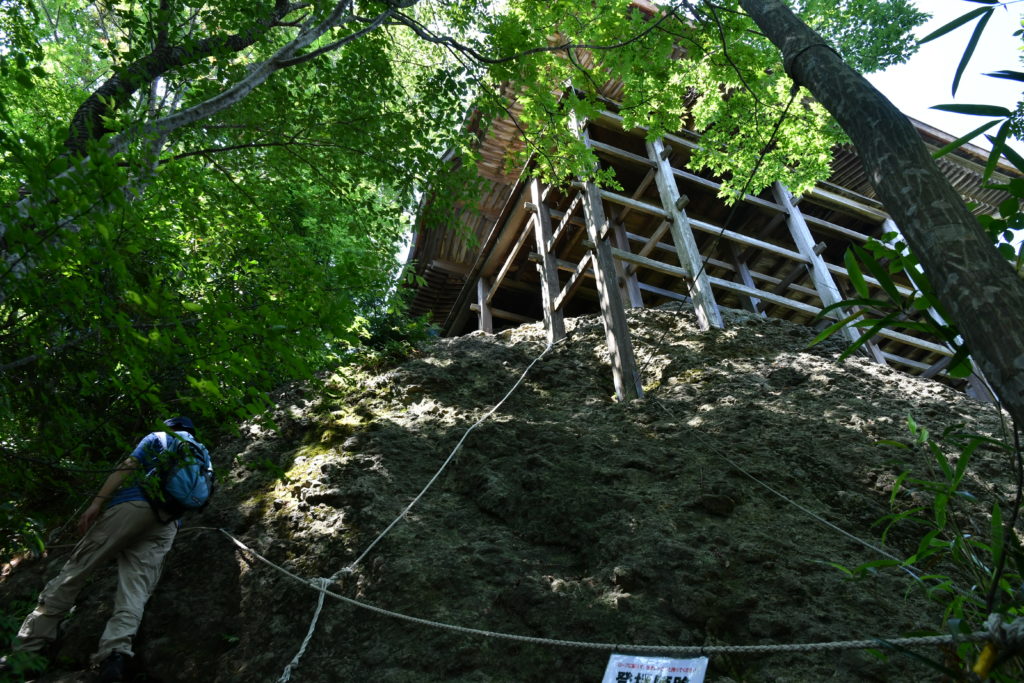
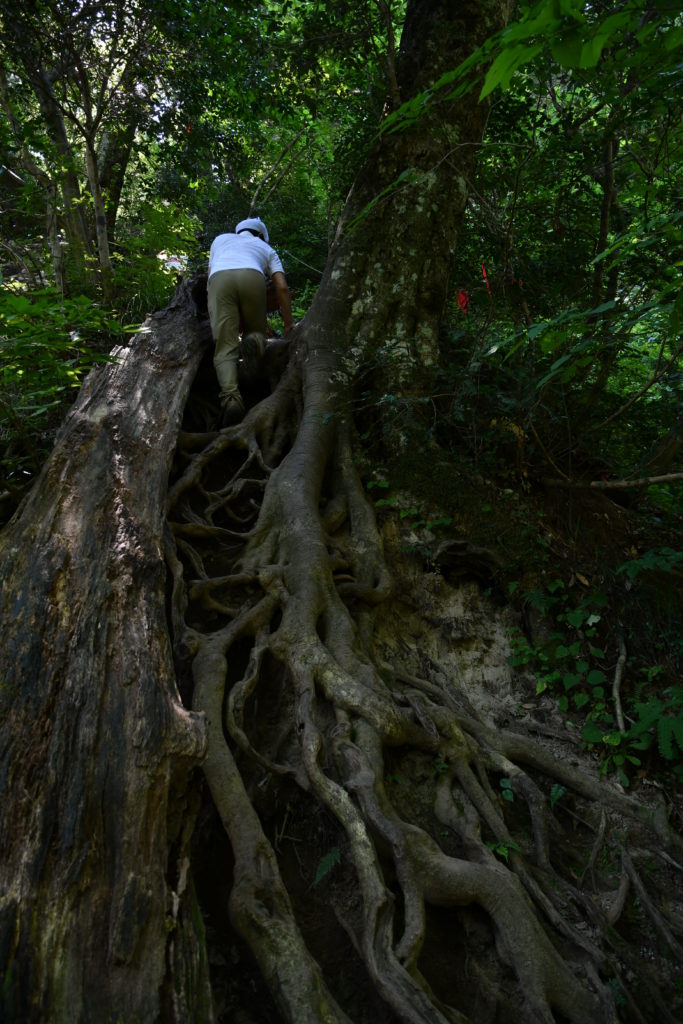
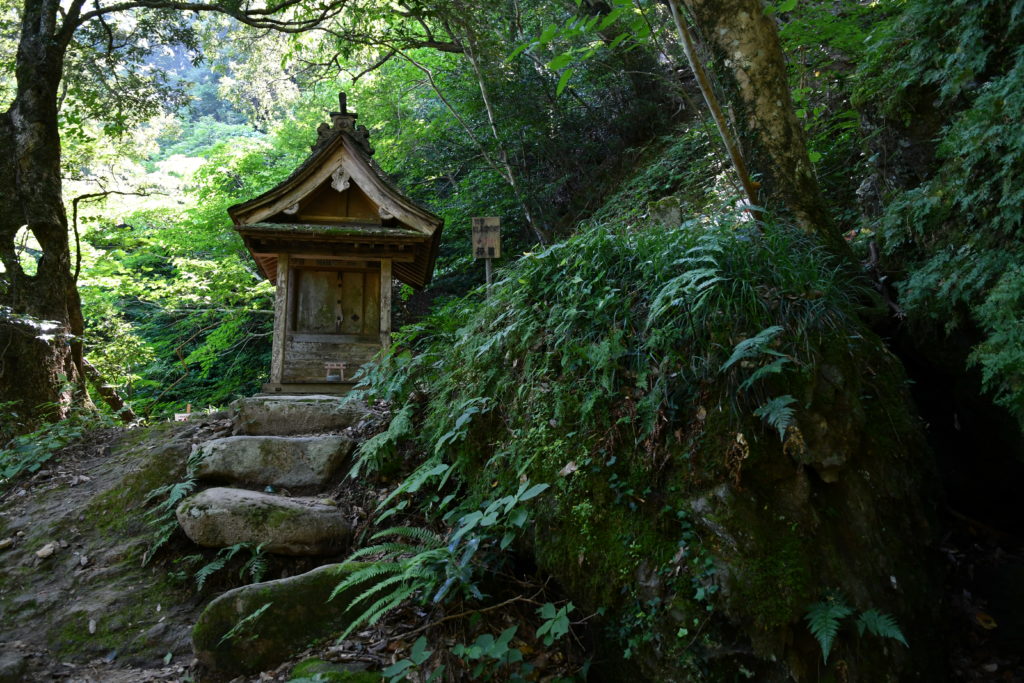
Raising Money for Pilgrimage Road Restoration via Crowdfunding
Because it requires people to walk such a treacherous path, there are severe restrictions placed on entering the mountain to visit Nageiredo’s ascetic practice spots. Entry is allowed between 8 AM and 3 PM. Entry by unaccompanied individuals or during inclement weather is prohibited. When a person enters the complex, they must submit to a check of their clothes and shoes in an office in the back of the main hall, after which they will receive a circular monk’s stole known as a wagesa, on which is written the phrase Rokkon Shojo, referring to the Buddhist concept of purifying the roots of one’s senses. They will also fill in their name and time of arrival on a form. When they leave, they will return the stole and report their departure.
Visitors with improper shoes or clothing are not permitted entry. If they have arrived in shoes that are not suitable for mountain climbing, they will need to purchase and change into traditional zori sandals before entering.
“11 years ago, one of a group of elderly people went missing during their visit. A 200-person group from the local fire brigade and Self-Defense Forces searched for him, and eventually, he was found in the valley. After that, we had to make entry management somewhat stricter,” says Yoneda.
It seems that there have also been various other difficulties related to managing the pilgrimage road. In the October 2016 Central Tottori Earthquake, which originated from an epicenter in the middle of Tottori Prefecture and reached a magnitude of 6.6, tremors of magnitude 5 were recorded in Sanbutsuji’s hometown of Misaki. The earthquake resulted in a crack in the rock on which Monjudo, a temple on the path to Nageiredo, rests, making it too dangerous for worshipers to visit Nageiredo.
“When we found out that the cost of repairing the crack would be in the hundreds of millions of yen, we decided to set up a detour route. But even that would cost several million yen. We held a crowdfunding campaign to cover the expense. It was my son’s idea,” Yoneda said.
The crowdfunding campaign garnered a lot of support, hitting its goal of 2 million yen in just four days, and it had accumulated over 9 million yen worth of contributions by the time it ended.
Even now, approximately 30,000 people worship at Nageiredo every year. In 2006, Mt. Mitoku marked 1,300 years since the original opening of the temple. In 2014, it was incorporated into Daisen-Oki National Park, and in 2015, it, along with Misasa Onsen, was registered as a Japan Heritage asset.
“As we move forward, we will need to ask the opinions of many people with connections to the temple as to how we are to preserve and make use of this heritage that has been passed down for over a millennium,” Yoneda says, putting force into his words.
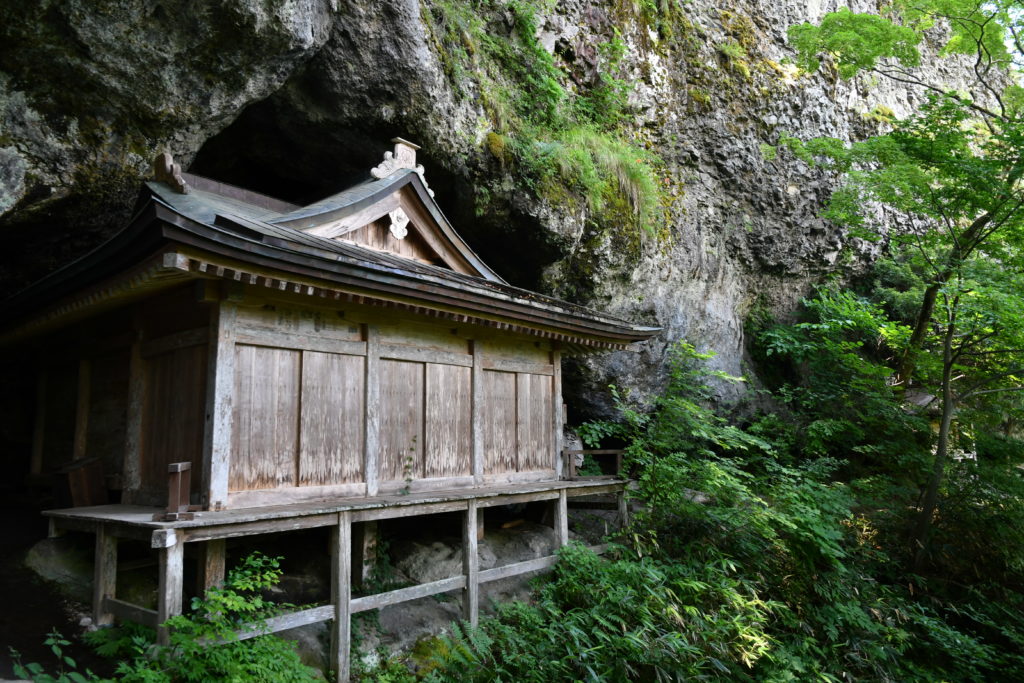
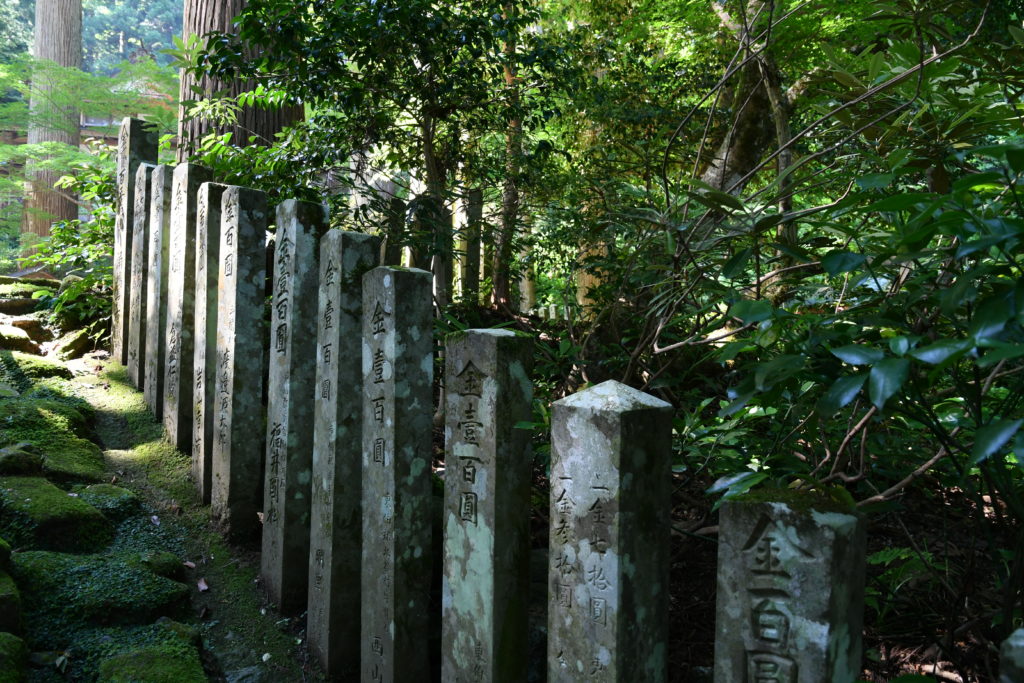
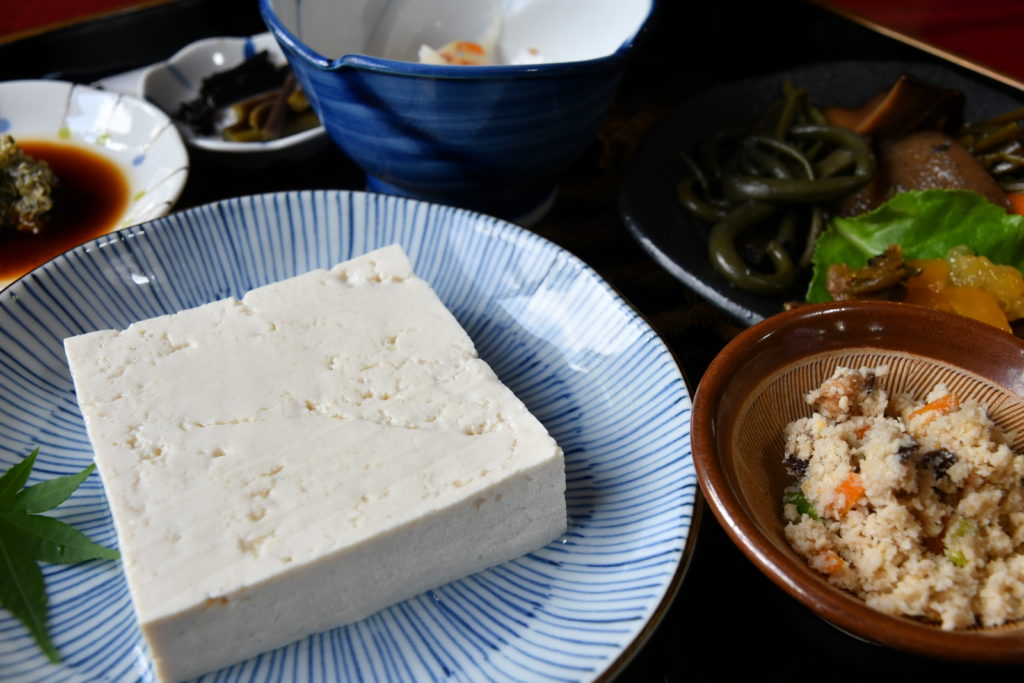
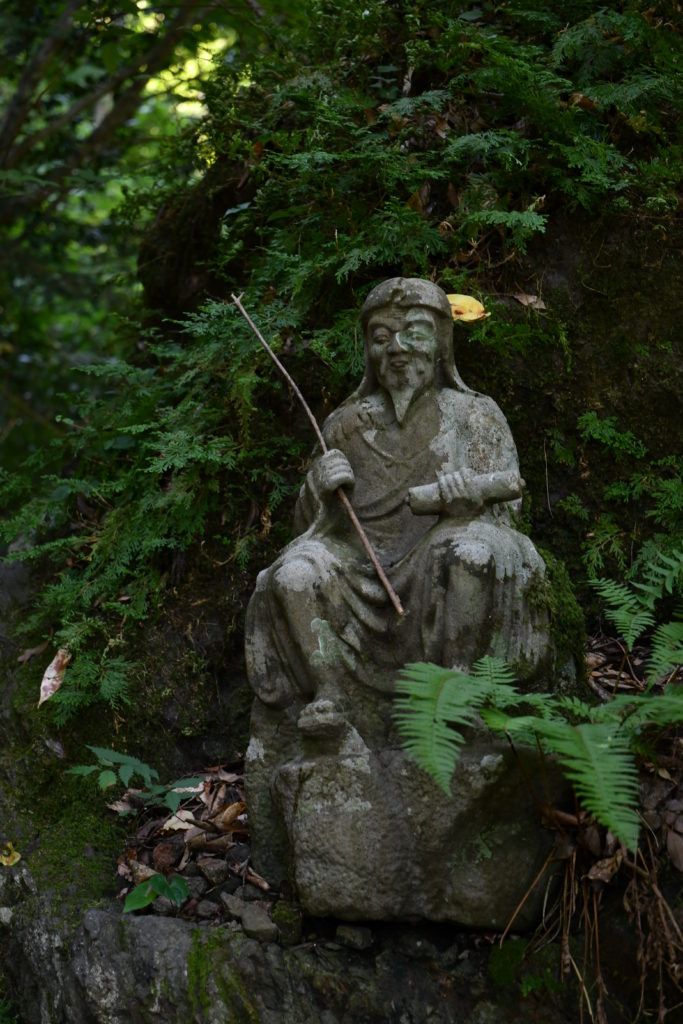
Mt. Daisen: A Sacred Mountain Greeting 1,300 Years since Its Temple Opened
Mt. Daisen, located on the western side of Mt. Mitoku and belonging to Daisen-Oki National Park, celebrated the 1,300th anniversary of its temple’s opening this year. At a height of 1,709 meters, Mt. Daisen is the highest peak in Japan’s Chugoku region and one of the “100 Famous Japanese Mountains.” It has been an object of worship since long ago, to such an extent that it appears as “Mt. Hinokami, in the land of Hoki” in the myth of Kunibiki, told in the 8th-century Izumo Kuni Fudoki (“Report on the Culture and Climate of Izumo”).
Additionally, Jizo Bodhisattva, who is enshrined at Daisenji, the temple located halfway up Mt. Daisen, is said to have appeared from the pond at the mountain’s summit to bless the water and save everything from the suffering of this world. This story did not stay in the Hoki area but spread across the San’in and San’yo regions, gathering a wide range of followers.
Religious faith connected to the waters of Daisen is embodied in the Mohitori Shinji, a rite that has been passed down for more than one thousand years. “Mohi” is an old word meaning “water,” so the whole phrase translates as “Water-Drawing Ritual.” Every year, on the evening of July 14, a night festival is held in the rear shrine of Oogamiyama Shrine, with traditional Shinto music and dancing offered up to Jizo. Late in the night, Shinto priests, “pioneers,” mountain guides, and ordinary participants head for the mountain’s summit. At dawn, they draw sacred water from the pond on top of the mountain, harvest pieces of the medicinal herb Artemisia monophylla, and go back down. On the morning of July 15, the actual festival is held, and the sacred water and herbs are distributed to attendees.
Mt. Daisen became known as a place for Shugendo in the late Heian Period, and the fame of its Jizo cult spread as far as Kyoto. Jizo is the Buddha who saves every living thing. For this reason, Kiko Shonin, a high priest of Daisenji during the Heian Period, distributed protective amulets that prayed for the safety of cows and horses, along with encouraging the animals to graze in pastures on the side of the mountain. The “Faith of Cows and Horses” grew widespread. People would come to Daisenji with cows and horses in tow, receive an amulet, then lead their animals to drink from the pond and pray for them to live long.
Later, a livestock market would grow up on Mt. Daisen; this market came under the management of Daisenji in the mid-Edo Period (1603-1867 CE). In the late Edo Period, it was determined to be one of Japan’s three largest livestock markets, and by the Meiji Era (1868-1912 CE), it flourished to such a degree that it was named the largest in the country.
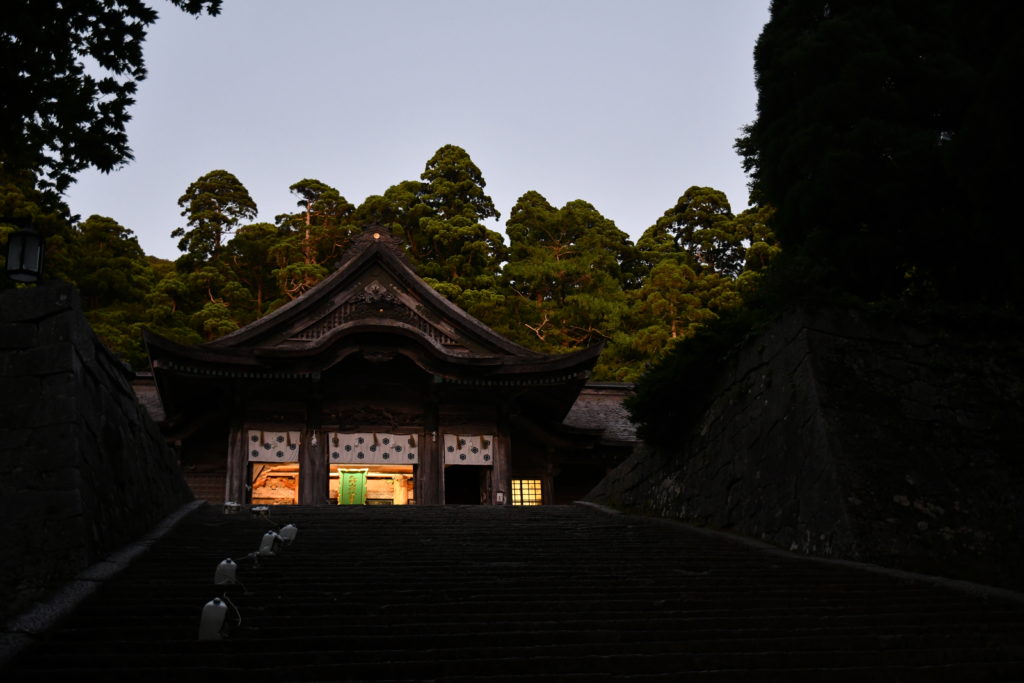
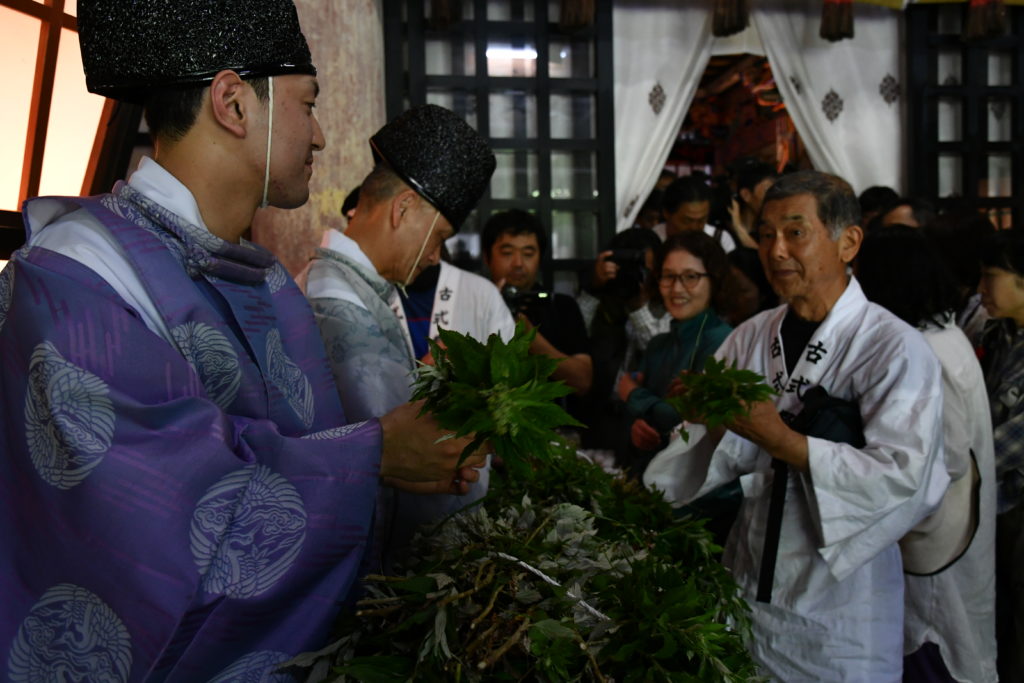
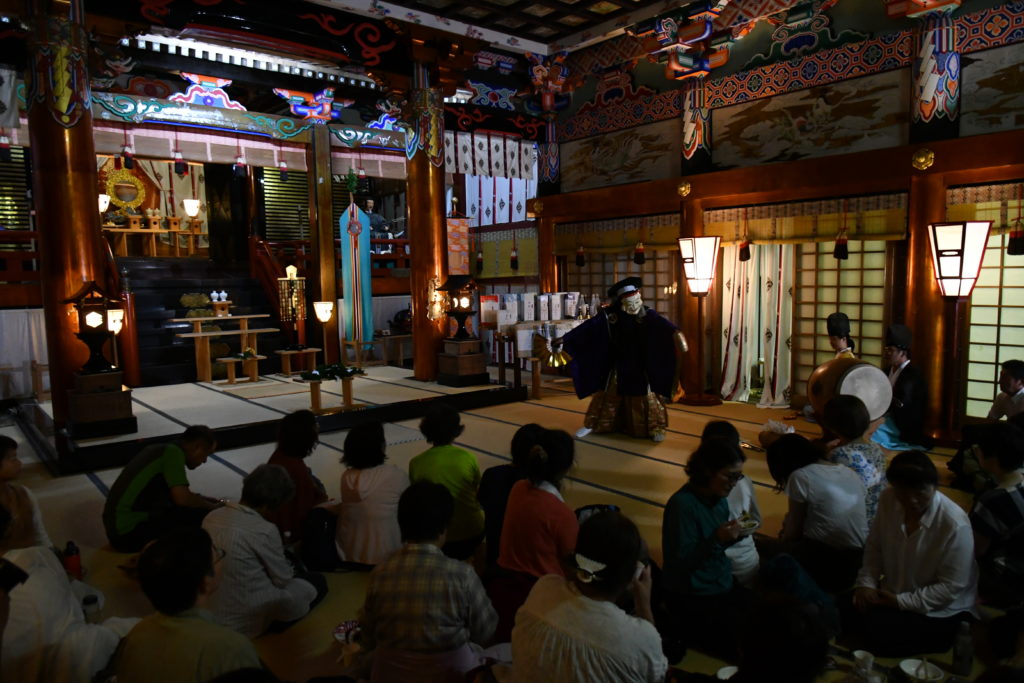
The Jizo Cult and Livestock Market Become Japan Heritage Assets
What helped this religion spread across various west Japanese provinces and supported the movement of cows and horses was a group of highways known as the Daisen Roads, which were built in a pattern radiating out from Daisenji. These highways were given names including Boryo Road, Odaka Road, Mizoguchi Road, and Maruyama Road. Many people came and went down these roads, especially around the Spring Festival and livestock market days. Long strings of inns grew up and greatly prospered in villages alongside the roads.
However, Daisenji suffered a major blow from the Kami and Buddhas Separation Order, enacted following the Meiji Restoration. Daichimyo Gongensha Temple, the central facility of Daisenji, in which Jizo Bodhisattva was enshrined, was turned into the rear shrine of Ogamiyama Shrine, and many of its monks proceeded to leave Mt. Daisen and return to secular life. The livestock market then declined in turn.
So although Mt. Daisen does not look as bustling these days as it once did, its food culture, including Daisen-Okowa, a rice dish often carried by worshippers, along with Daisen Soba noodles, whose cultivation is said to have been recommended by Kiko Shonin, still remains, as do the culture and customs of the old townscapes along the highways. This is why, in 2016, “The Daisen livestock market, Japan’s largest, nurtured by the Cult of Jizo,” was selected as a Japan Heritage asset.
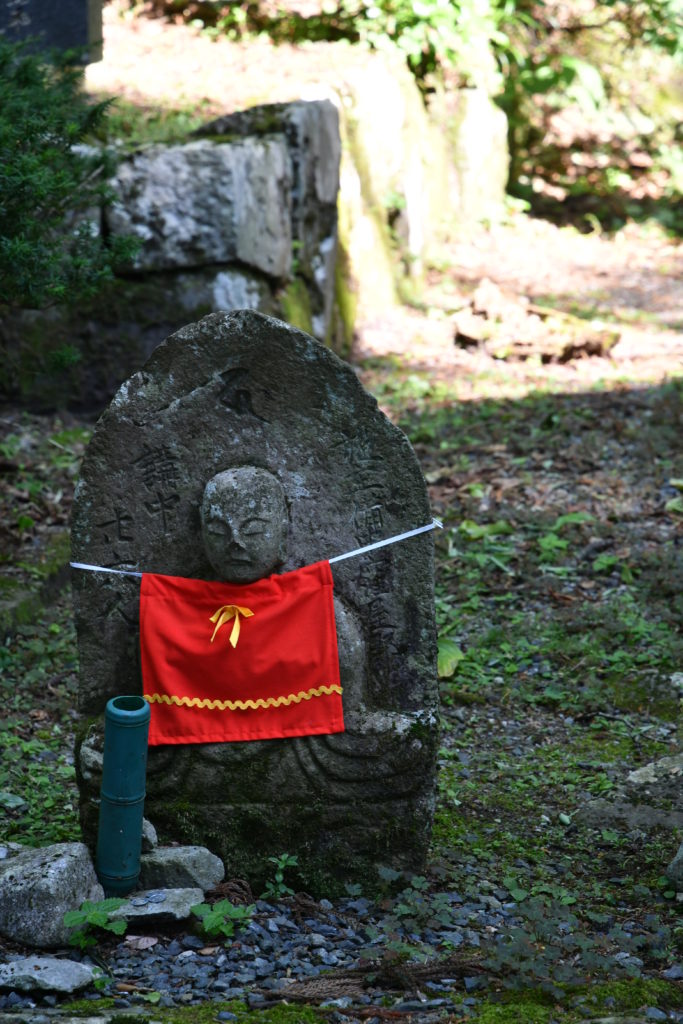
Daisen-Oki National Park Is Chosen For the Mankitsu Project
For having such a rich historical and cultural heritage, Daisen-Oki National Park was chosen in 2016 as one of the Ministry of the Environment’s eight Leading National Parks for the Ministry’s Mankitsu Project (also known as the Project To Fully Enjoy National Parks). Progress is aggressively being made on using its cultural and natural heritage to establish it as an attractive national park.
“This April, we strengthened the rest facilities and the mountain climbing base facilities. At the Daisen Pilgrimage Road entrance, we re-opened the Daisen National Park Center, which is now equipped with the capacity to provide information to incoming visitors in a variety of languages. Through coordination and cooperation with private business operators, several new facilities were set up nearby, including cafes, vendors, and tourist information centers. Going forward, we want to put more effort into maintaining the trails that have kept the history of the Daisen Roads and Mt. Mitoku alive,” says Naoki Nakayama, head of the Ministry of the Environment’s Daisen-Oki National Park Management Office. This region is home to a cultural heritage that is both a national treasure and a Japan Heritage asset, as well as a natural heritage rich enough to be designated a national park. With various projects underway following the opportunities presented by both the Mankitsu Project and the 1300th anniversary of the opening of Daisenji, more and more people will indeed be drawn in by this area’s charms going forward.
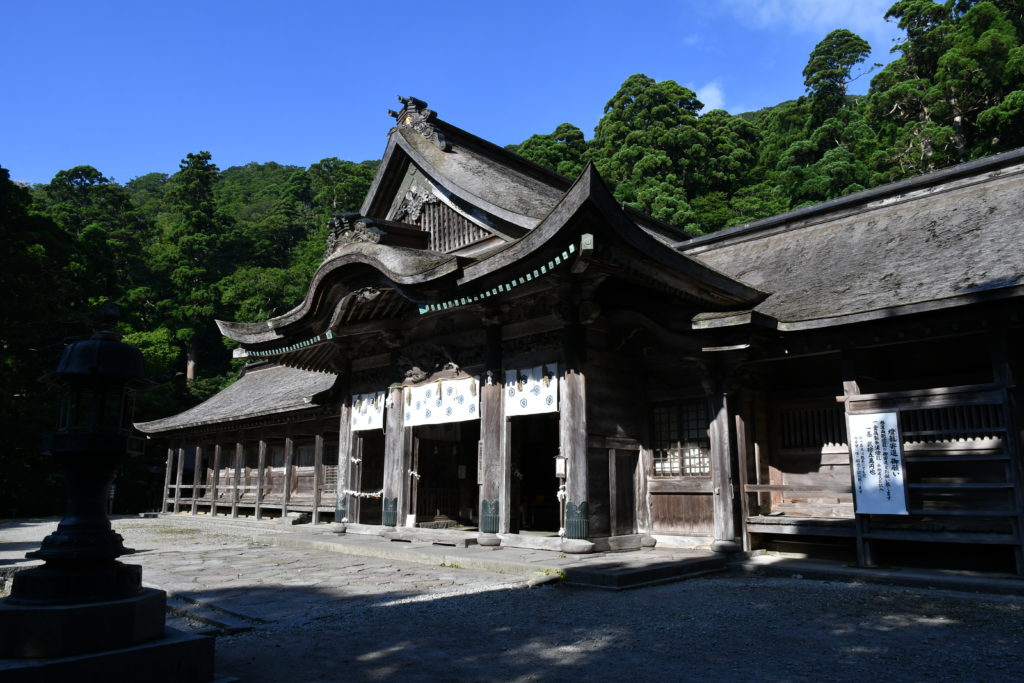
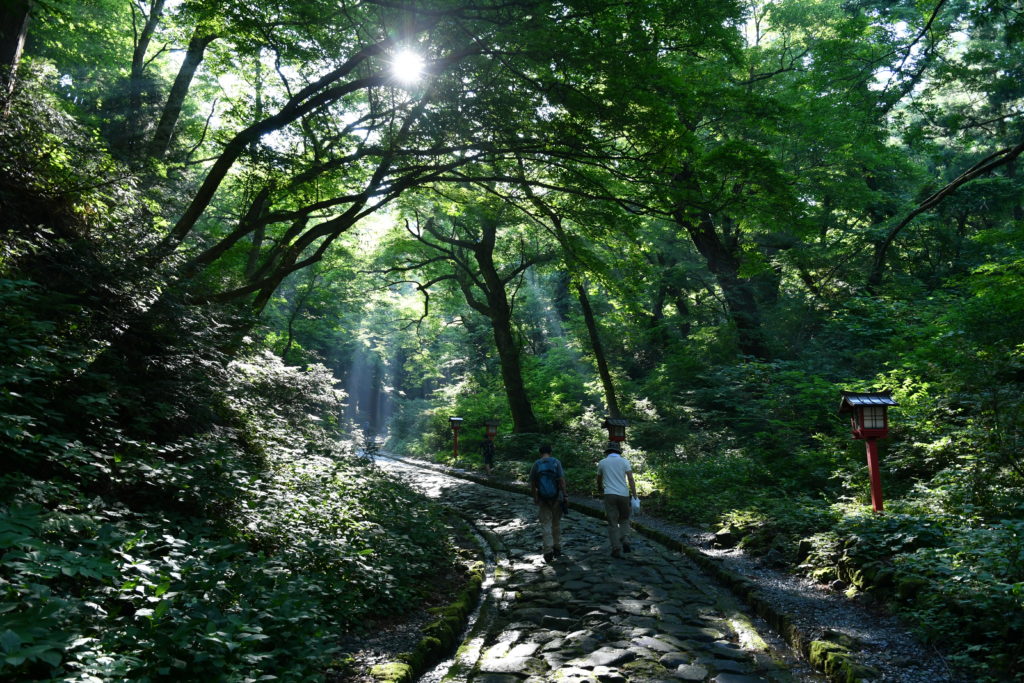
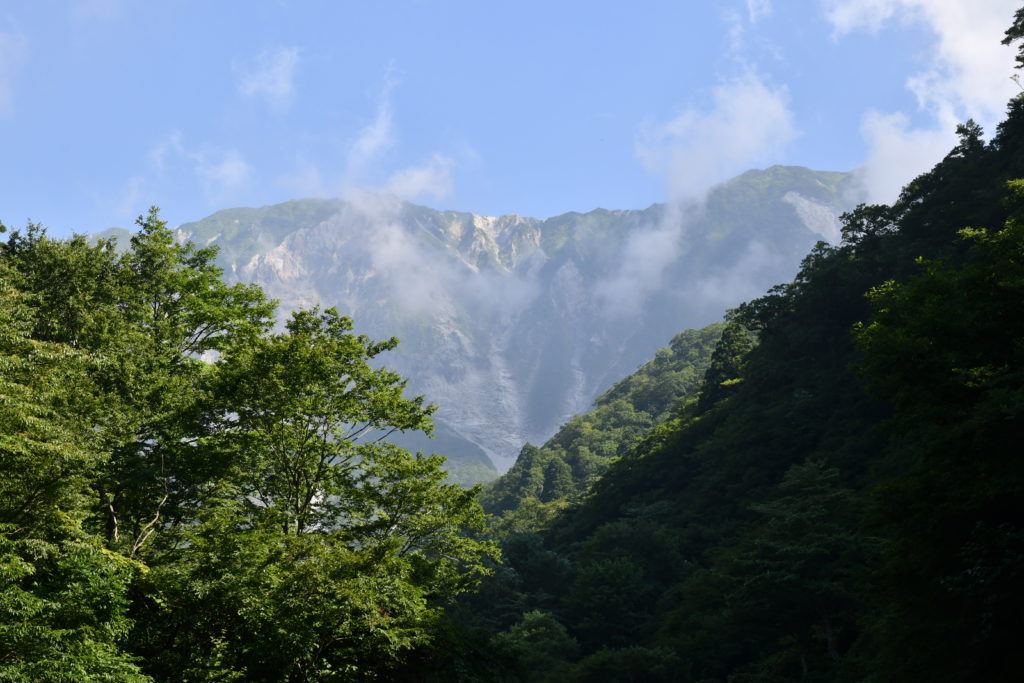
Translated from the original article: Naoya Furuta (2019) Mt. Mitoku and Mt. Daisen: Unique History and Culture Spanning One Thousand Years, Chiikijin vol.38, pp. 64-69

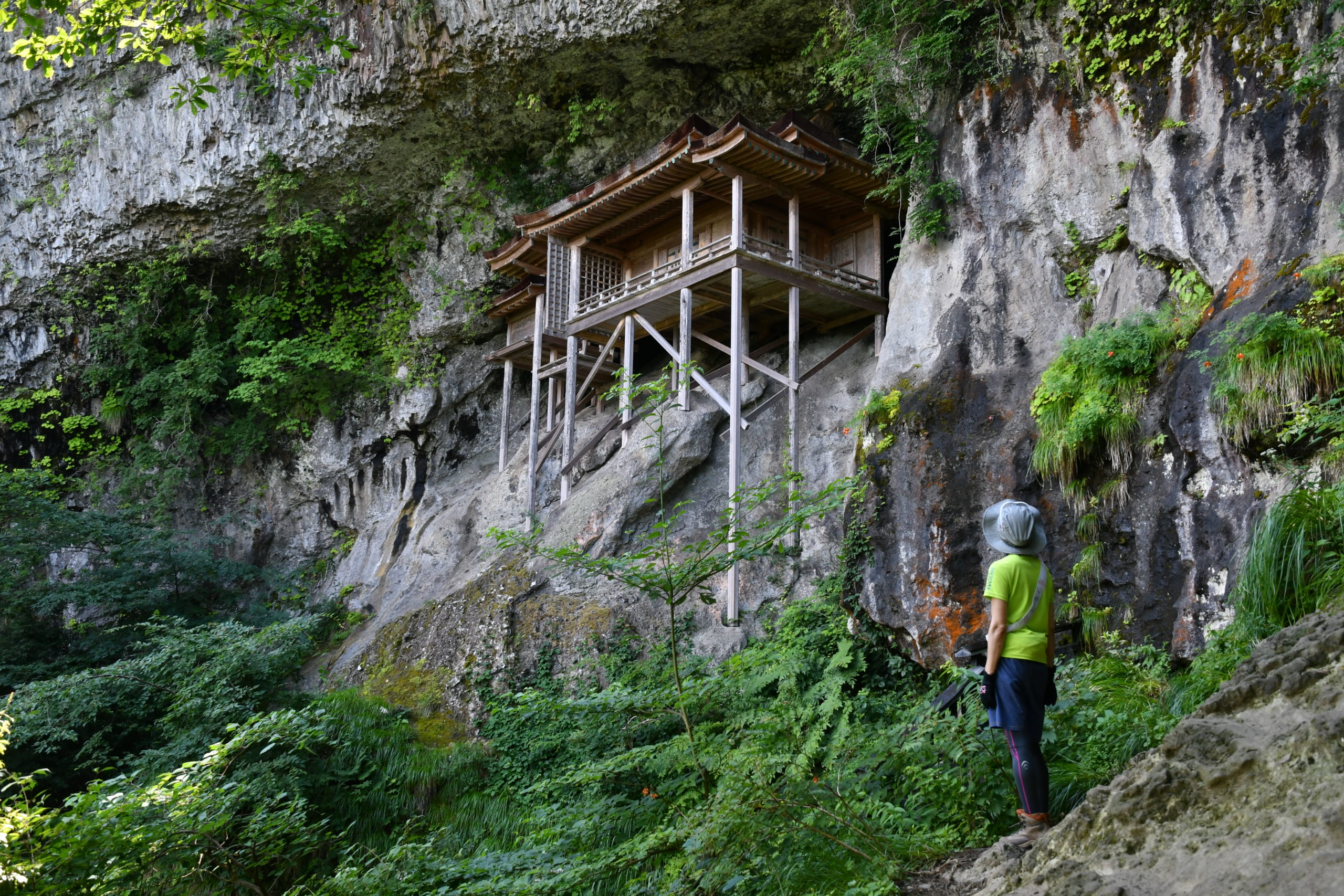


コメント